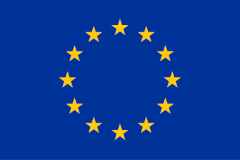Optimisation of the oxygen use in EAF steelmaking by direct process monitoring of the chemical melt reactions
OXYMON
In the EAF process, chemical energy is provided by exothermic reactions induced by oxygen through bottom nozzles and injectors. Their individual efficiency and contribution to the overall energetic performance is difficult to determine. In the project an in-situ fibre optical melt temperature measurement technique in combination with a multi zone reaction model and a dynamic energy and mass balance model are applied to study and optimize the efficiency of chemical energy inputs from different sources. Expected benefits are increased energy and resource efficiency, enhanced productivity, and minimised maintenance effort. Furthermore, the knowledge on the oxidation reactions with the bath is improved.
Funding agency
EU Research Fund for Coal and Steel (RFCS)
Beginning and End Dates
01/07/2017 - 31/06/2021
Contact person


